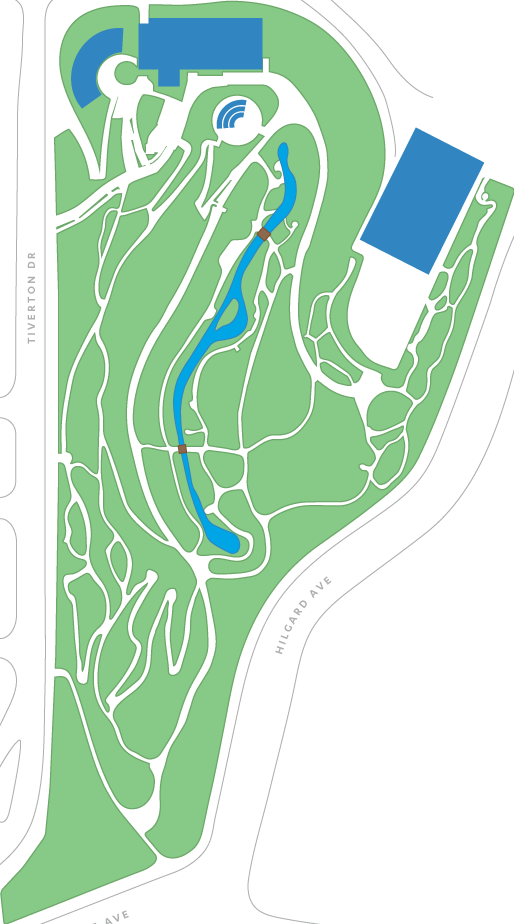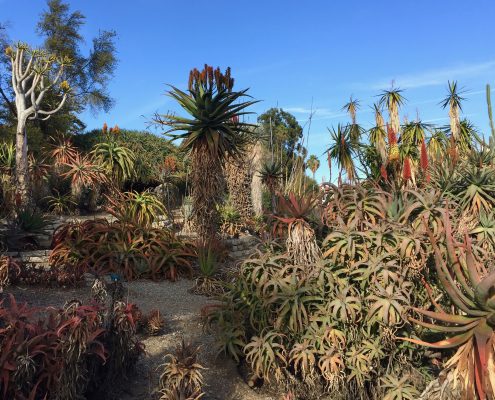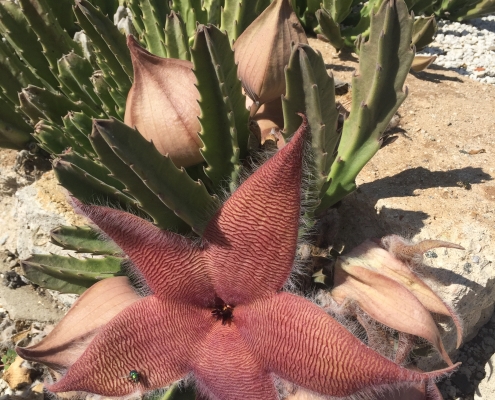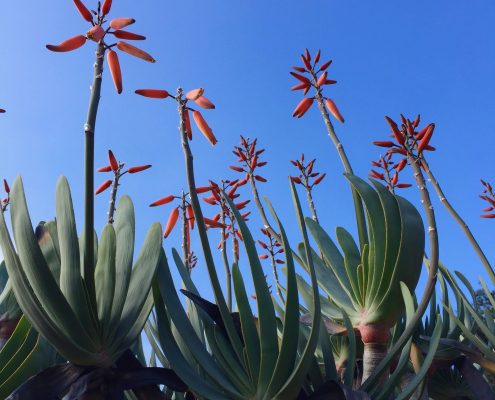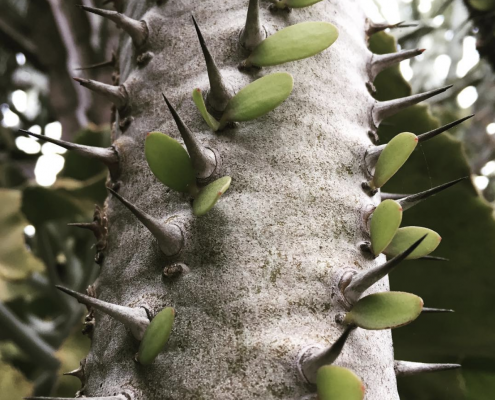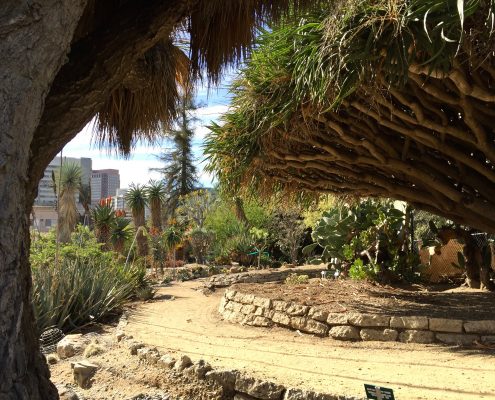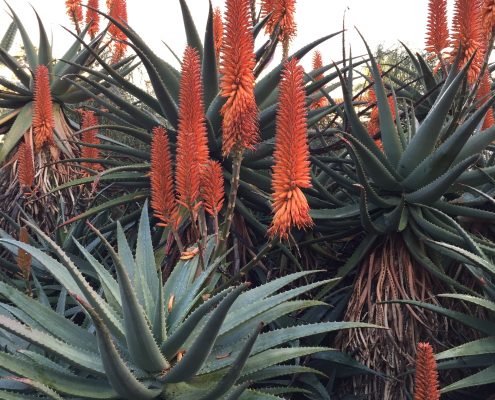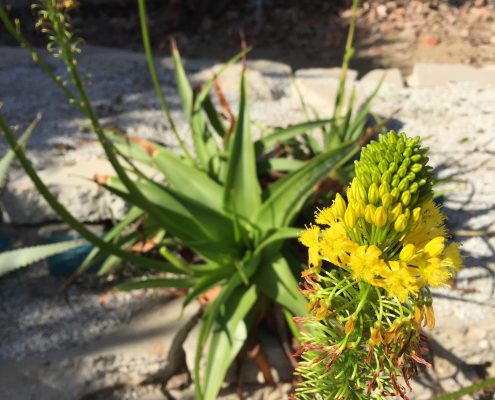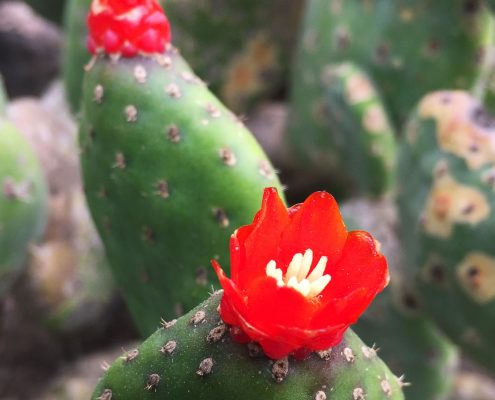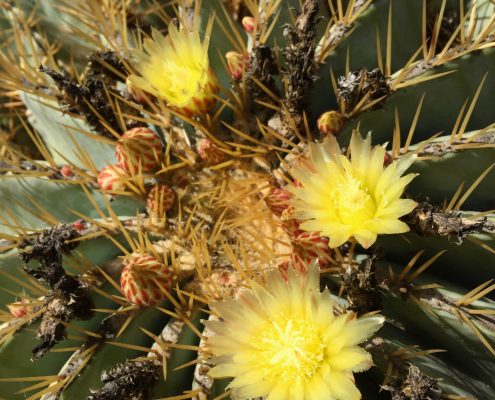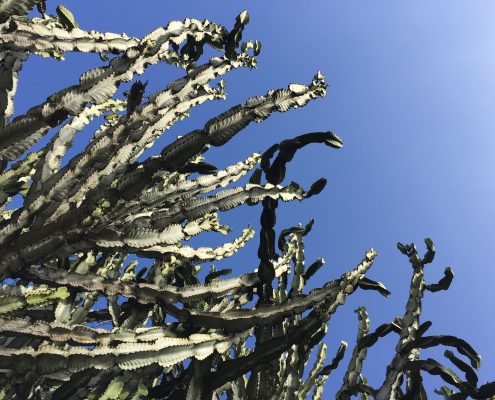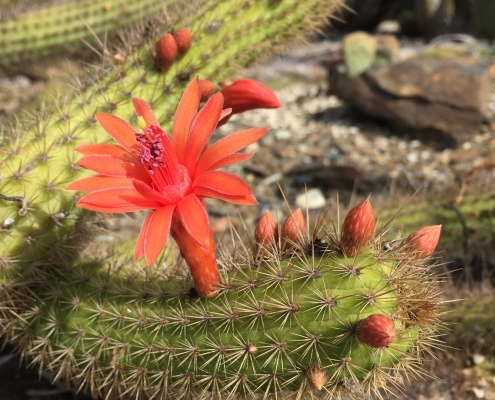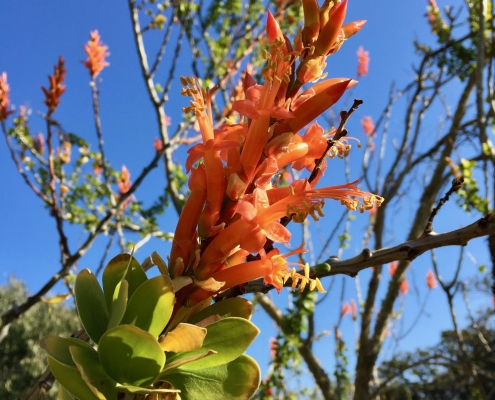![]()
The Daniel C. Lynch Desert Collection
Desert plants are tough and resilient. Extreme conditions like heat and drought shape the traits of these amazing plants. The pale leaves of mottlecah, Eucalyptus macrocarpa, reflect more sunlight than green leaves. Species of Aloe like geelaalwyn, Aloe wickensii, grow in vertical bunches to limit sun exposure. This prevents plants from overheating!
Worried about water? Cacti store water in pleats and folds. Plants like elephant’s ear, Kalanchoe beharensis, have wooly hairs covering their leaves. These hairs help reduce the sun’s and wind’s evaporative power.
JARDÍN DESÉRTICO
Los días ardientes, las noches frías y la escasa lluvia de los desiertos crean ambientes extremadamente complicados para la vida. A lo largo de la evolución, las plantas desérticas han desarrollado una variedad de adaptaciones para sobrevivir en este tipo de clima. Algunos ejemplos incluyen el almacenaje de agua en tallos y hojas suculentas, hojas deciduas que se pierden durante períodos de sequía y ciclos de vida cortos. Tanto el agua como los tejidos foliares son tan valiosos en esses ambientes, que muchas plantas desérticas utilizan espinas, aguijones y otro tipo de armamento para defenderse de sedientos herbívoros.
Explore Further
Deserts are found throughout the world. Various definitions exist for desert, but often include limits of precipitation, or a negative evapotranspiration, meaning that more water evaporates from the area than is added from precipitation. The plants of deserts have evolved numerous strategies to deal with the harsh climate. In many cases, similar strategies for coping with the desert climate have evolved independently in unrelated groups of plants in different parts of the world.
The Daniel C. Lynch Desert Collection includes plants from true deserts, semi-deserts, desert/Mediterranean transition zones and other arid climate regions. This Collection is organized into several subsections which include South African succulents, Canary Island natives, New World deserts, and Madagascar spiny forests. A diverse variety of aloes, cacti, agaves and bromeliads (Dyckia and Puya) are found here. Highlight specimens include a large Dragon tree (Dracaena draco) from the Canary Islands, and a stand of Madagascar ocotillos (Alluaudia procera).
